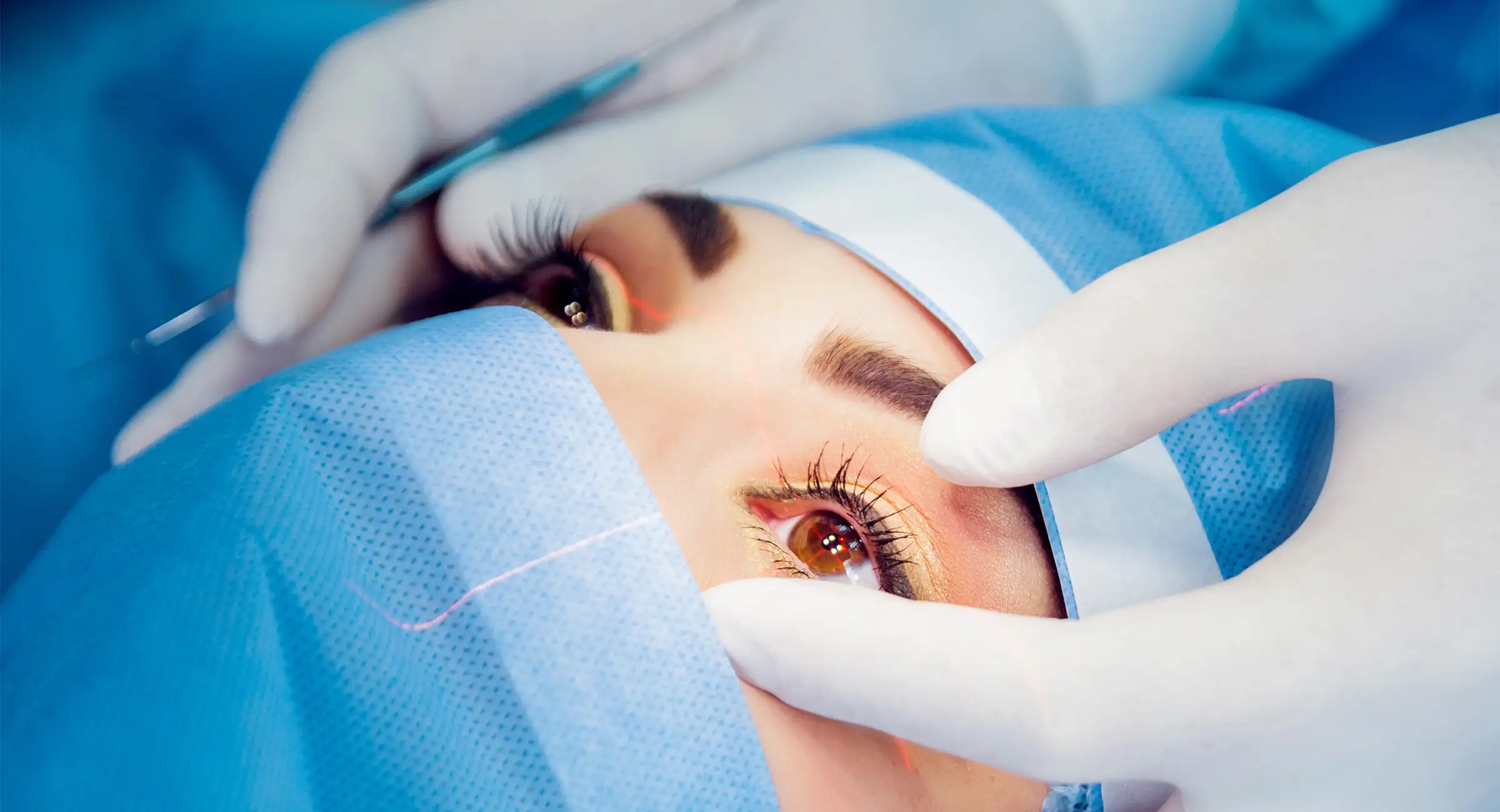At Southern Eye Group, our experienced eye doctors offer a range of procedures to care for the eye health of patients in the Mississippi, Alabama, and Florida Gulf Coast, including Corneal Transplant Surgery.
What is a Corneal Transplant?
Corneal transplant surgery, also known as corneal grafting or keratoplasty, is a surgical procedure that involves replacing a damaged or diseased cornea with a healthy one from a donor.
Preparing for Corneal Transplant Surgery
Corneal transplant is typically recommended when other treatments, such as medication, have failed to provide relief. Your eye doctor will conduct a thorough examination before discussing your treatment options. If you and your doctor decide that a corneal transplant is the best course of action, you will be provided with detailed pre-op instructions.
How Does Corneal Transplant Surgery Work?
The surgery is typically performed under local or general anesthesia, depending on the patient’s needs and preferences. During the procedure, the surgeon will make an incision in the cornea to remove the damaged or diseased tissue. This is usually done using a circular cutting tool called a trephine.
Once the damaged tissue has been removed, the surgeon will carefully measure the size of the donor cornea and cut it to fit the recipient’s eye. The donor cornea is then placed in the recipient’s eye and secured in place using tiny stitches.
Recovery After Corneal Transplant Surgery
After the surgery, the patient will typically need to use eye drops and take other medications to prevent infection and promote healing. The recovery time can vary depending on the patient’s age, overall health, and the extent of the surgery, but most patients are able to return to normal activities within a few weeks. Follow-up appointments will be scheduled to monitor healing.

What Conditions Are Treated with Corneal Transplant?
- Keratoconus: a condition in which the cornea becomes thin and bulges outwards, causing distorted vision.
- Fuchs’ endothelial dystrophy: a condition in which the innermost layer of the cornea (called the endothelium) becomes damaged, leading to cloudiness and reduced vision.
- Corneal scarring: scarring can result from various conditions such as infections, injuries, or previous eye surgeries.
- Corneal degenerations: these are inherited diseases that cause abnormal deposits in the cornea, leading to vision loss.
- Corneal ulcers: these are open sores on the cornea caused by infections, injuries, or inflammatory conditions.
- Bullous keratopathy: a condition where the cornea becomes swollen and painful, often as a result of long-standing Fuchs’ endothelial dystrophy or following eye surgery.

Types of Corneal Transplants
Different types of corneal transplant procedures may be performed based on the needs of the patient. There are three main types of corneal transplants:
Penetrating Keratoplasty (PK): This is the traditional corneal transplant surgery, in which the entire thickness of the damaged or diseased cornea is replaced with a donor cornea.
Lamellar Keratoplasty (LK): This is a more recent and less invasive technique, in which only the damaged or diseased part of the cornea is replaced with a donor cornea.
Endothelial Keratoplasty (EK): This is a newer and more specialized technique, in which only the innermost layer of the cornea (the endothelium) is replaced with a donor cornea.
Frequently Asked Questions About Corneal Transplant
Am I a Candidate for Corneal Transplant?
Corneal transplantation is usually reserved for cases where other treatments, such as medication or contact lenses, are not effective. It can also be used for cases where the cornea has become so damaged that it is no longer able to transmit light, resulting in severe vision loss or blindness. A thorough exam with an eye doctor is the only way to determine if cornea transplant surgery is right for you.
What are the risks of corneal transplant?
As with any medical procedure, there are risks involved in corneal transplant. Potential complications include eye infection, rejection of the donor cornea, increased intraocular pressure, and
Trusted Source
Cornea Transplant
Mayo Clinic
Go to Source
retinal problems
. Attending follow-up appointments and adhering to post-surgical instructions can help minimize your risk of complications.
Will a Corneal Transplant restore my vision?
Every individual will have unique results, based on their condition and other factors; however, most people who have a corneal transplant will have
Trusted Source
Corneal Transplantation
The Johns Hopkins University
Go to Source
long-lasting
improved vision.

Contact Southern Eye Group
To learn more about corneal transplants, contact us to schedule a consultation today or request an appointment online.
1 Mayo Clinic. Cornea Transplant. Available: https://www.mayoclinic.org/tests-procedures/cornea-transplant/about/pac-20385285 Accessed April 20, 2023
2 The Johns Hopkins University. Corneal Transplantation. Available: https://www.hopkinsmedicine.org/health/treatment-tests-and-therapies/corneal-transplantation. Accessed April 20, 2023
The doctors at Southern Eye Group have either authored or reviewed and approved this content.
Page Updated:


